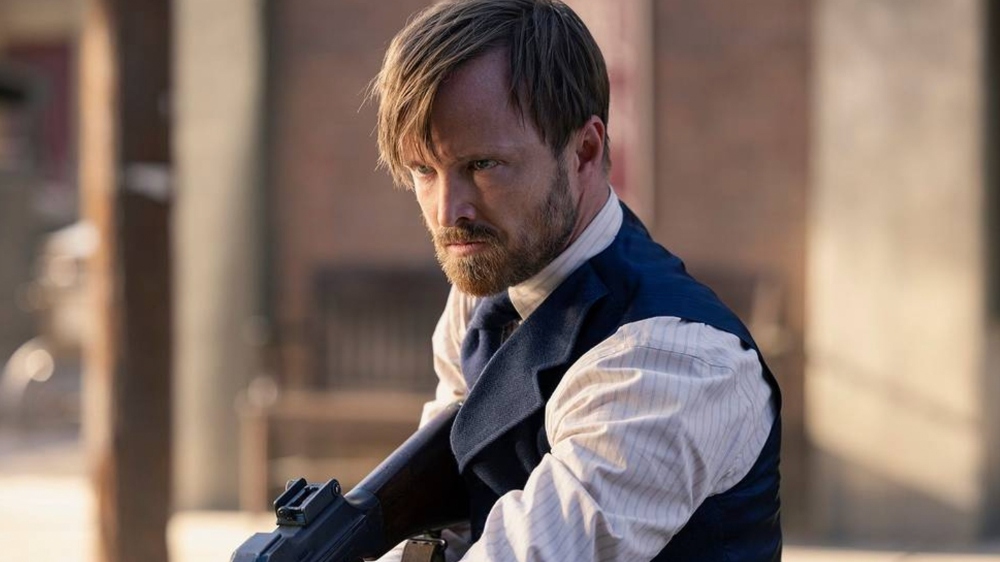
Paul Cameron is ready for his close-up. The veteran Director of Photography has collaborated over the years with filmmakers such as Tony Scott (Man on Fire and Déjà Vu), Michael Mann (Collateral), Joachim Ronning and Espen Sandberg (Pirates of the Caribbean: Dead Men Tell No Tales), and Lisa Joy (Reminiscence), but over the last several years, he has lent his talents to more than a dozen episodes of HBO’s hit sci-fi series Westworld.
In 2020, during Season 3, Cameron made his directing debut with Episode 4, “The Mother of Exiles,” and he handled directing duties once again on Episode 4 of the newly-wrapped fourth season, “Generation Loss,” which dropped on July 17.
With Season 4 of the HBO series now in the rearview mirror, Cameron recently spent a half-hour speaking with Below the Line, and he dug deep into how he first connected with the show, his path to the director’s chair, his method for keeping track of Westworld’s many surprises, and how he intends to direct other projects in the future.
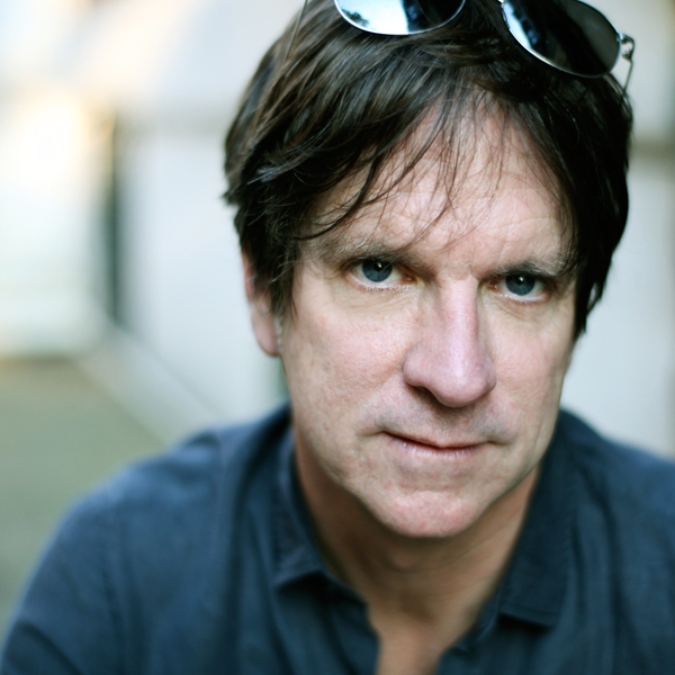
Below the Line: You’ve been with Westworld since the beginning. What’s it like to be with a show from the get-go and stick with it for four seasons?
Paul Cameron: It’s an incredible opportunity. When I got the call from Jonathan Nolan to come in and talk about Westworld, I respected the movie, quite honestly. I thought, ‘Okay, let’s see what they have to offer.’ I’m used to going into meetings. You try to warm up to people, and then turn the conversation from “I” to “We,” or whatever. Within 30 seconds, we were talking about how we’d do the show; that we were going to shoot it on film, and this would be the overall idea. The interesting thing for me was that I got brought in on the preparation level early on with Nathan Crowley, the Production Designer, and Jonathan. Suddenly, there was this ability to be there for some of the conceptualization and visualization. In other words, they had this idea for the pilot and the first season’s overall arc.
The whole part of the preparation was, ‘Okay, what are we going to build?’ Obviously, we were going to build the Melody Ranch and the western town for all the loops. We had to utilize the stages for the interior behavioral labs and whatever we could build on there for that. But how do we tie in these other worlds, specifically in the pilot, which was shooting in Moab down in Utah? A couple of things that Nathan, myself, and Jonathan talked about… I was suggesting, ‘Let’s bring the third or fourth wall of a set to these locations. We’ll complete the scenes on location, but let’s take these sets out to Moab and get those shots where the characters walk out to the porch and you have this backland. Do that scene out there, and when they walk back, we’ve already done that coverage.’ It was this idea of, ‘How do we not shoot blue screen and how do we do it as practically and as real as possible?’ It’s great to get on board with that.
Jonathan and Lisa Joy are [married]. It’s been fabulous to be a part of conceiving and visualizing what the show could be, and actually being there and seeing what the show becomes. I have to say, even at this point working as a director on the show, I’m in awe of the arc. And it’s been through a few machinations since some of this season seems like a bigger leap in terms of the writing and a whole new kind of direction for these characters. It was talked about very minimally in the beginning, but it evolved in such a grander way.
The other thing, just to wrap that up, is I’ve been involved with some big features as a cinematographer. I’ve had the opportunity to see a very big film come together from an idea of the script, to the script, to the actual shooting and finishing of that, but what I’ve experienced with Westworld, it’s like reading a book that never ends. You start reading a book and get it in your subconscious. You might put it down for a day or two, an hour, two hours, or a year, pick up the book again and continue reading it. The story sits in your mind and evolves in your subconscious. This has been the process for me of being on Westworld because it’s evolved into this ever-changing, surprising reality — as a show.
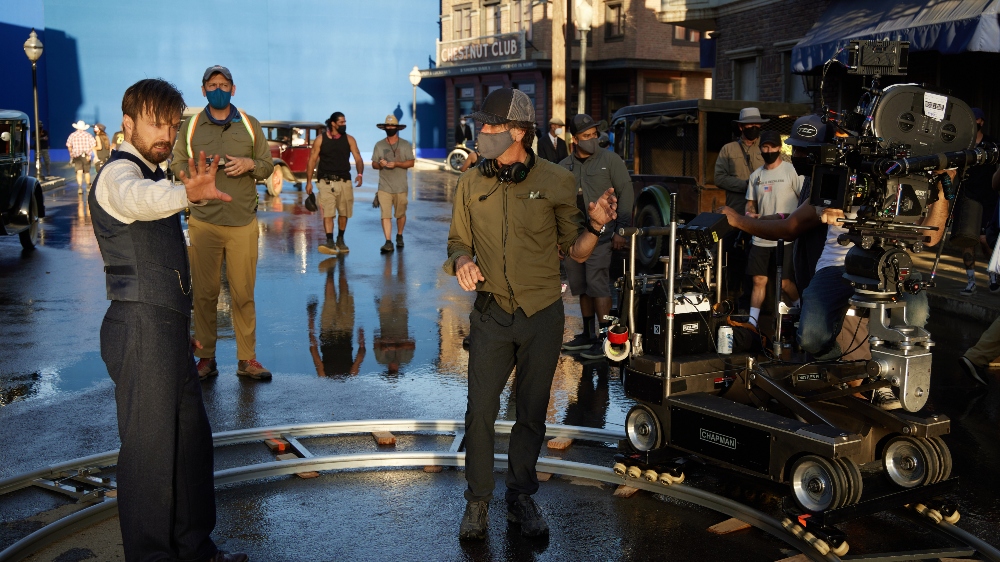
BTL: How did the opportunity for you to direct Westworld come about?
Cameron: Jonathan and Lisa… it was probably earlier on in the second season that they asked if I was interested in directing. I went off to shoot the last Pirates of the Caribbean and came back, so I only shot a little bit of the western footage that season. When Season 3 came up they said, ‘Listen, Jonathan’s going to direct the first episode, and we’d love for you to direct an episode.’ Lisa Joy had her first film, Reminiscence, that she’d asked me to shoot. So, we figured it out. ‘Okay, we’ll shoot Jonathan’s, and maybe we should just do an earlier episode. We’ll give you Episode 4 in Season 3.’
That was my first go at it, and it was quite amazing. They trusted me and gave me the opportunity to direct. During the process of actually putting it together and directing it, I saw very little of Jonathan and Lisa. I expected them to be on the set as showrunners but they were like, ‘Here, you go do your thing. You know what you’re doing. You know these characters, this world, and what we’re looking for.’ I loved that. That was a great opportunity.
BTL: How satisfied were you with the episode?
Cameron: I’m quite happy with it. It’s got some big arcs, and some great scenes throughout. I’m very happy with that, and extremely happy with this recent episode, Episode 4 of Season 4, probably more so than the first one because the challenge of this one was greater. We’re converging timelines. Specifically, the transition for Caleb was a big one for me. Having the chance to work with Aaron Paul that closely was fantastic.
BTL: Before we talk specifically about Episode 4 of Season 4, what did you learn from directing an episode during Season 3 that you brought to Season 4?
Cameron: The biggest lesson from working on the previous episode, what I took away from the first experience directing on Westworld, was that I didn’t have the confidence to step into the story and the emotional world of the characters. I’d directed a series of commercials and things like that, but I’d never directed on a level of this type. The actors, they’re all A-level actors. In the first go around, it was a bit daunting stepping onto the set and realizing that you have five A-level actors you’re directing today. They were extremely supportive, and respectful. They knew that I needed to show a great understanding of the emotional landscape of their characters so that I could speak their language. That came from years of working as a director of photography. I’ve had experiences where you’re watching a director do all the directing and talking, and I’ve certainly had experiences on stuff where some actors felt more comfortable talking to me about their performance because I’m right there, and the directors might be somewhere else at the time, like video village. The important thing is [that] anytime you step into anything new, it’s unfamiliar territory. It’s about getting your footing, and in this case, speaking the language.
As a director, when you’re dealing with three or four top actors in a scene, everybody brings different energy. They might’ve rehearsed the scene a couple of days ago, but different actors are feeling a certain way on different days and want to try things. It’s this dance of working through the rehearsal and trying to get everybody on the same page, meaning, “This is the writing. This is the intention of the writing. This is the scene’s arc. This is the episode’s arc. This is the season’s arc.”
[At] any given moment, when you’re breaking them down and talking to an actor, you hold this in your mind and yet address them on a one-to-one level as a character, and as a person. It’s a delicate dance. It’s those conversations during rehearsals when I discover what they’re struggling with as an actor, or working towards. You see the gift of those performances, and it’s fascinating to be part of that progression of ideas. The other thing is, it’s interesting to watch these actors; they may want to take their character and shift things a bit towards a different direction that you know, as the director, is not where the character is going, but you’ve got to listen to these actors. All actors go through the process necessary to evolve their characters.
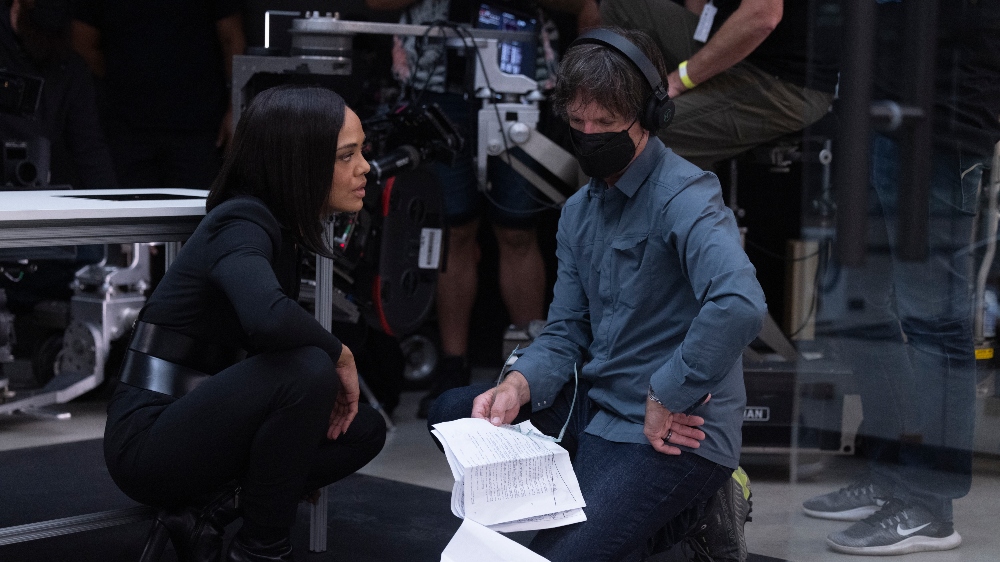
BTL: Westworld is one of the most complicated, complex shows on television, and Episode 4 this season was one of its most complicated and complex episodes ever. In your episode, scenes shifted from the lighthouse to the hospital, to flashbacks, to New York, etc. Is your office just filled with note cards and animatics? How do you break it down to understand the logistics, much less the emotion, and keep it all in your head?
Cameron: You take what you get, and then you look at the reality. You might be given an outline a few weeks before you start prep, with the hope that in two weeks when you start, you get a script. In my case, I was asked early on to jump in and direct a few scenes when I had no script. I just had a very brief outline, and they would give me a page or two that tended to be some of the flashbacks in the episode with Maeve and Caleb.
In this case, I had read [Episodes] 1 through 3, and that was around when Craig was directing [Episode] 2. I was getting bits and pieces from the showrunners, plus Jonathan and Lisa, as to the direction of the episode. When I realized the magnitude of the story, I was probably a week into prep already; where you had an idea about what was happening, and then you get the script to prep with, and it’s like, ‘Okay, this is pretty massive.’
The way I work is, you break it down into the most important transitions and the most important emotional beats. My tendency is almost like you said, to put everything on cards and then put them on the wall to figure everything out. Also, it’s more about sitting with the writing and rereading it. It’s about seeing the edit in your mind and knowing where the audience needs to be editorially and emotionally throughout the episode, the nuts and bolts of it.
Of course, you’ve got sequences like the rock quarry, where Maeve, Hale, Caleb, and the Man in Black end up. There’s a big shootout with Maeve and the Man in Black while Caleb and Hale are in that shed. That’s a giant sequence. It’s got a big scale. Originally, I was given three days to shoot all that material and I thought, ‘Oh, I can’t possibly do that.’ We decided we would take another day and shoot the interior of the shed back on stage. I would only do some of the interior of the shed as a tie-in.
Then you break it down, go through it, and think, ‘Okay, I have three days to do that work,’ only to realize this is almost undoable again. That’s when you get the reality. Once you’re scouting and you figure things out, then you present it again, and suddenly you learn they’re only going to give you two days to do that. With the experience I have as a cinematographer on films, it’s this magic of how you organize things to make the day. So, I structured it.
The explosion at the beginning of that sequence was all practical. There’s no CG enhancement, except for the redressing of the hill below where you see these red lights go off, where Maeve is meshing into the demolition site to explode it and save Caleb, basically killing herself and the Man in Black. I structured the shooting of that. There are so many factors, it’s incredible.
I love working with Ed Harris. but I also know that Ed loves to get going and then finish. He likes to take it to the finish line once you get started. It’s very hard to work with an actor like Ed and say, ‘Hey, we’re going to do these beats tonight, from 2 to 6 in the morning, and then we’ll see you tomorrow at 1 a.m.’ I basically came up with this plan to blow up the entire place, then shoot out Ed’s side and come back the next night to shoot out Maeve’s side to tie in the pieces from the shed. When you look at the sequence, and you see the amount of footage we actually got, it’s pretty astounding that we pulled it off because we were in the middle of the summer. There were only about nine hours a night. Between lunch and actors coming and going from base camp, I probably had about seven hours a night to actually pull that sequence off.
I had a wonderful experience with Peter Flinckenberg, the director of photography. It was very collaborative with him. Because I have more experience as a cinematographer, I could help him by saying, ‘You have to be ready for that. You have to be prepared for this because I’m going to drive this train faster than anybody’s ever seen.’
BTL: You’re intimately familiar with Westworld, so what twist in your episode surprised even you?
Cameron: Honestly? From the outline, I knew that this was going to be Caleb’s breaking point. This was the episode where Hale would break Caleb, and the fascinating thing for me was [that] I really wanted to know why. Why is she going after him? Why is he so vital to her plan? That whole idea. Again, I have an outline and I was thinking without the ending. What is this trajectory for Jeffrey Wright coming back to save the world again? Why is he there, specifically? I had an inkling. I knew the Frankie character is suddenly in Jeffrey’s timeline, so I knew whatever present this is, what’s happening now, was definitely on that timeline, because we’ve jumped.
Frankie is obviously a younger woman looking for her father, Caleb, so you put together the pieces. I was like, ‘Oh my God, I know what’s happening. Timelines are converging!’ You get the script and you read it, and it’s like, ‘Oh, my God. This is 23 years later.’ The twist for me was to see that Caleb would end up, 23 years later, in his 278th machination of himself, and that we’d get to experience this moment of his transition of basically being killed, then launched into the future. That was pretty powerful. I called Jonathan and Lisa and said, ‘Thanks for getting me a nice, simple storyline.’
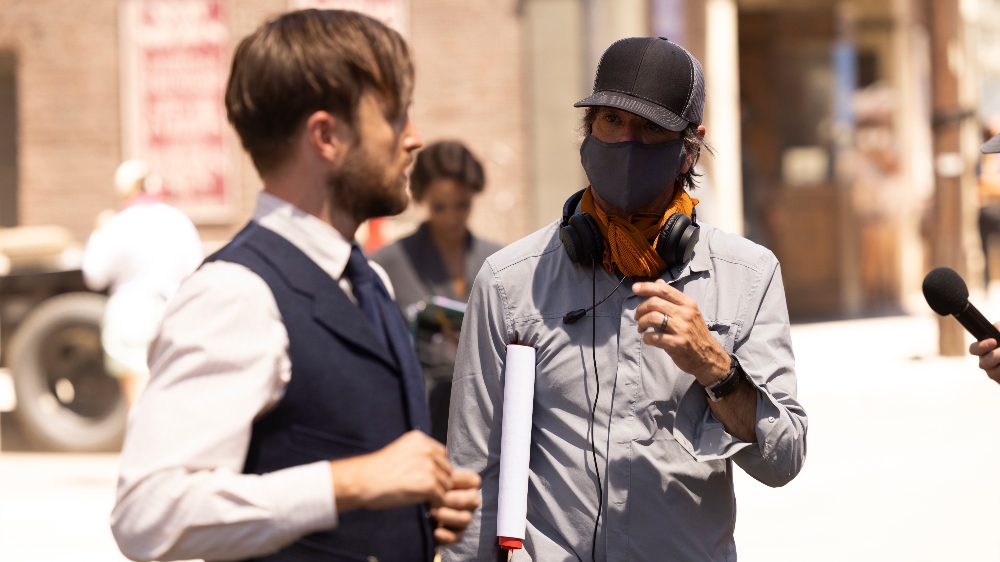
BTL: What was it like to see the finished episode? And what did you make of the fan reaction?
Cameron: It’s funny. My wife and I were up in Oregon when the episode came on and we watched it that night. For me, it’s always like watching movies that I photographed. I’m trying to detach from my part in it and actually see it for the first time. You go through your edit, then you go to a color correction, and there is another edit. The final edit is something that they don’t show anybody until it goes on the air. There was some beautiful shaping. Their final touch was great to see. I was very surprised over the next couple of days when people from Kilter Films reached out and said, ‘People love the show. It’s trending. People are saying it’s one of the best episodes from Westworld.’ It’s wonderful to hear that it’s being received that well. I haven’t read anything, but I’m looking forward to delving into it more.
More than anything, I’m pleased that it appears as if Aaron’s performance is being notably recognized. That’s very important to me because directing Aaron was a fabulous experience. Even though you have a certain limited number of days to shoot your episode, my episode actually got spread out. When I started shooting it, other things happened [with] production where they had to shoot some other parts of other episodes, and suddenly I had shot some stuff with Aaron [from] that sequence towards the end. We rebuilt the shed a few weeks later on stage, and I shot a little more of it. I came up and pitched this idea of a stylized shed at the very end. I took the windows of the set and we put lights outside of them, then the camera revolves around the last piece in that control shed. That was shot probably over six weeks; a day here a day there.
BTL: Then there was the New York sequence…
Cameron: Where he wakes up. Part of it was shot on stage in Santa Clarita, and then the beat where he goes running out of the building, where we freeze all the people, was shot at the Hudson Yards in New York. What you experience in the last eight minutes of the episode was actually spread over eight weeks of working. Even scenes at the very end, where Hale freezes and Caleb realizes her control, and power over things, that’s great because you finally get to New York to shoot a scene like that.
When they tell you, ‘Oh, you’ve got five hours to shoot a scene,’ that’s great. Then there are multiple directors working that day, shooting multiple scenes, and you’re waiting. You’re going to get the crew at two o’clock, and suddenly two o’clock turns into 3, then it’s 4, then 4:30. The sun is going down. There are two hours left, and you’re like, ‘Okay, so that’s what it is.’ The important thing there is to go through your shot list, break it down, and react very quickly. The most vital thing is to work with Aaron and Tessa [Thompson] to try and get back in that emotional place.
BTL: What else do you have in the works?
Cameron: I’m currently developing a few things now for a few projects, a couple of scripts, and series ideas. I’m actively looking for more work as a director of other episodes. It’s been a great journey, and I’m looking forward to what’s available very soon.
All four seasons of Westworld are now streaming on HBO and HBO Max.





